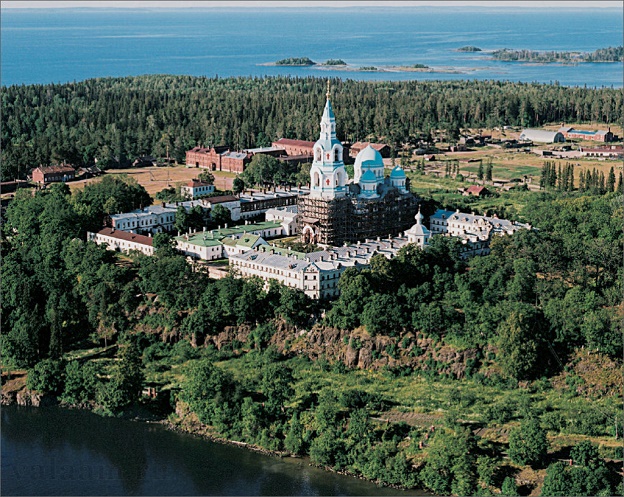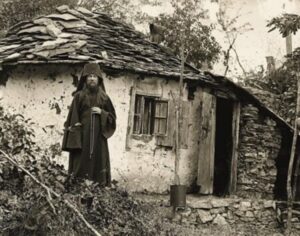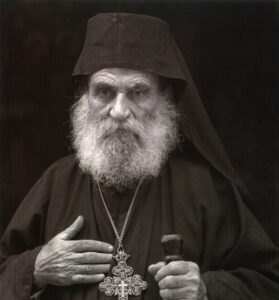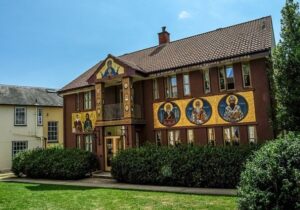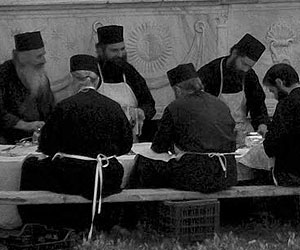The presence of Orthodox monasticism in Finland
18 March 2016[Previous Publication: http://bit.ly/2237ZPi]
Monasticism in the Orthodox Church of Finland has stood firmly by the Church, and they faced dauntlessly together the long and oppressive foreign yoke and the stiff and fanatic religious proselytism which Finland has tasted in its history. The survival of the Orthodox Church and of the Orthodox faith in Finland when it was occupied by foreign powers, and when the Orthodox faithful were under the direct influence of the Roman Catholic and Protestant Churches, is a remarkable and admirable event in the history of the Orthodox Church of Finland. This survival of course must be ascribed to the Orthodox faithful who remained firm and unshaken in their doctrines and beliefs and religious convictions in spite of their exiles and sufferings.
However, the Church undoubtedly owes the survival of its faith to a great extent to another factor, i.e. to monasticism, and to the radiance, the vigor and the growth of the monastic communities. In most cases the monasteries were the places in which the faithful took refuge, either in order to join monasticism, with the desire of leading a life of perfection, or to avoid the persecutions and the oppression of the conquerors, and to save their faith.
It is for this reason that monasticism has been regarded as the guardian of the faith inByzantiumand in the Orthodox Church in general throughout the centuries. These historical facts about monasticism in the Orthodox Church of Finland show the close relationship and identity it has with Byzantine monasticism.
There is no doubt that monasticism in the Orthodox Church of Finland is originally and basically Byzantine.
The first missionaries of monasticism in that Church, who were distinguished as leaders in the monastic life and were the Patrons of the first great monasteries which were founded in Finland, came from Byzantium and particularly from Mount Athos which, soon after the foundation of the great monasteries there, became the center of the tradition of Byzantine monasticism early in the 12th century.
It is true, however, that Orthodox monasticism in Finland spread and evolved under the influence of the monasticism of the Russian Church, its neighbor. The monastic life in the Orthodox Church of Finland has been affected by the monastic life of the Church of Russia as a result of their neighborhood and common climatological environment. This influence is mainly to be found in the ecclesiastical thinking, in the liturgical language, and in the manners and customs of the monastic life and practice of the two Churches.
This was inevitable since Ladogan Karelians remained under Novgorod for 300 years (1323-1617) and under the Russian occupation during the 19th century and the beginning of the 20th. In spite of all this the Orthodox Church and Orthodox monasticism inFinlandsaved their integrity and their identity. Their combined work and their activities amongst the “Pleroma” (the faithful) provided the defenders of the Orthodox faith, the Martyrs, Confessors, Fathers, teachers, ascetics, monks, the missionaries and the preachers, and kept the Orthodox Church, the Orthodox tradition, and Orthodox monasticism alive.
I would like to conclude this paper with a few remarks on the tradition of Byzantine monasticism in the life of the Orthodox church as a whole.
Although Byzantine monasticism owes its formation to the Desert Fathers of Egypt, nevertheless from the time of its foundation in the 4th century it possessed its own identity and originality and eventually became the monasticism of the whole Orthodox Church. So the traditional Byzantine monasticism is identical with the monasticism of the One Orthodox Church.
The Ascetic Rules of St. Basil and the Ascetic Rule of St. Theodore of Studios have never ceased to be the basis and the traditional characteristics of Orthodox monasticism. The great monastic community ofMount Athos, which is regarded as the monastic center of the Orthodox Church has been under the tradition of early Byzantine monasticism since its founding. Mount Athos has been the school as well as the guardian of Byzantine monasticism for the whole of the Orthodox Church before and after the fall of the Byzantine Empire.
As the Orthodox Church of Byzantium, i.e. the Ecumenical Patriarchate of Constantinople, is accepted as theMotherChurchof several independent autocephalous Orthodox Churches which were founded throughout the centuries, that Church is in fact, directly or indirectly, their mother in monasticism too in its Byzantine form and tradition. Here again, I think, is one more reason to accept the tradition of Byzantine monasticism in the Orthodox Church of Finland.
From Acta Byzanitna Fennica, v. 1, 1985.

